Weird mammals include the aye-aye, a Madagascan primate that finds food using echolocation; the babirusa, whose long tusks curve back and pierce its own skull; the naked mole rat, a near-blind hairless burrower; the narwhal, a whale with a unicorn-like horn; and, perhaps the strangest of all, the platypus, an egg-laying mammal with a duck-like beak.
On this page you’ll find a list of the world’s weirdest mammals, with pictures and interesting facts on each species.
Have you seen any of these species? What's your favorite? Are there any weird mammals we’ve missed out? Let us know in the comments section at the bottom of the page!
Weird Mammals
- Aye-Aye
- Babirusa
- Bald Uakari
- Bat-Eared Fox
- Bearded Pig
- Capybara
- Colugo
- Gerenuk
- Hammer-Headed Bat
- Lowland Streaked Tenrec
- Maned Wolf
- Mouse Deer (Chevrotain)
- Naked Mole Rat
- Narwhal
- Pangolin
- Platypus
- Proboscis Monkey
- Saiga Antelope
- Sloth
- Snub-Nosed Monkey
- Star-Nosed Mole
- Vampire Bat
You can see more weird species on the following pages:
Weird Animals Pictures & Facts
Weird Amphibians Pictures & Facts
Weird Birds Pictures & Facts
Weird Fish Pictures & Facts
Weird Insects Pictures & Facts
Weird Reptiles Pictures & Facts
Weird Sea Creatures Pictures & Facts
Weird Plants Pictures & Facts
Ugly Animals Pictures & Facts
Discover More About Animals
Discover More About Mammals
Aye-Aye
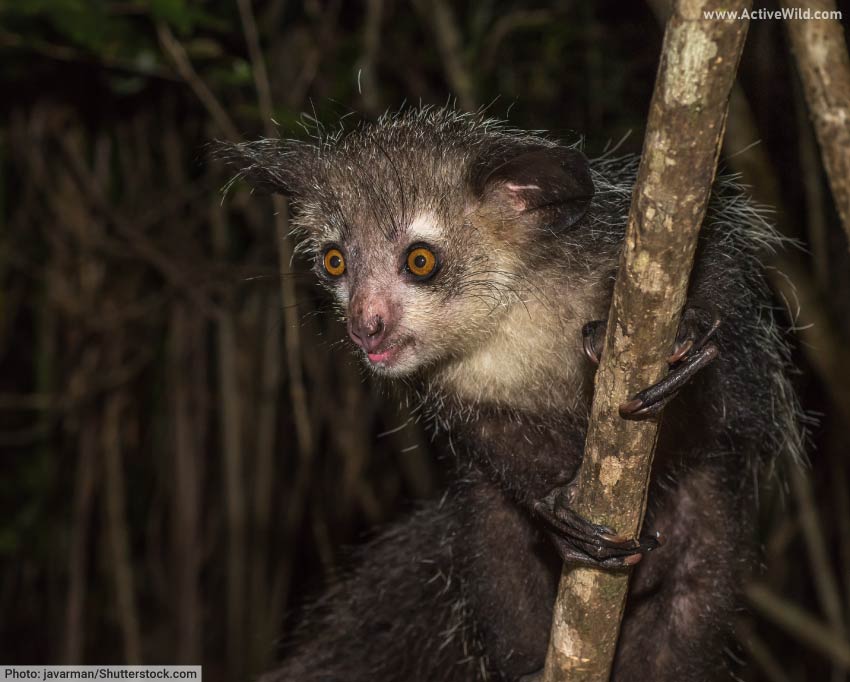
Scientific name: Daubentonia madagascariensis
Family: Daubentoniidae
Continent: Madagascar (Africa)
IUCN conservation status: Endangered
A nocturnal lemur with unique features, including rodent-like teeth and a long, thin middle finger used for foraging.
This weird mammal was also featured on our main Weird Animals page.
Discover More With Active Wild
You can find out more about the aye-aye on this page: Aye-Aye Facts
Babirusa
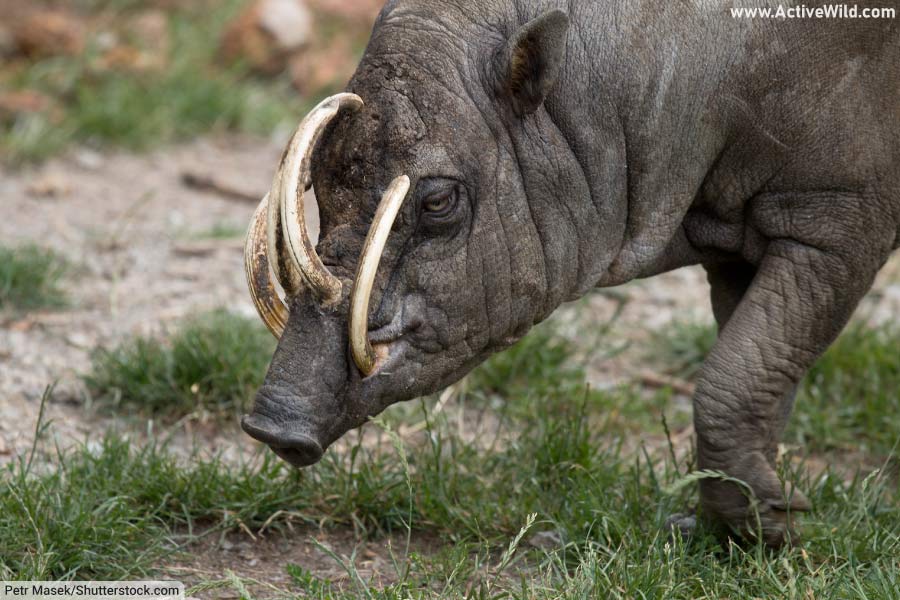
Scientific name: Babyrousa babyrussa
Family: Suidae
Continent: Indonesia (specifically, Sulawesi and nearby islands)
IUCN conservation status: varies by species
Babirusas, also known as the "pig-deer," are a group of wild pigs characterized by prominent, curved upper tusks that can grow through the skin on the snout, sometimes even curving back towards the forehead and piercing the skull.
A male babirusa has both upper and lower tusks, while a female has smaller tusks or none at all. The tusks are used for fighting and display.
Babirusas are omnivores, primarily consuming fruits, leaves, and small animals. They inhabit tropical rainforests, swamps, and riverbanks and are good swimmers, often seen crossing rivers and lakes.
Discover More With Active Wild
You can see other "ugly" animals on this page: Ugly Animals List with Pictures & Facts
You can find out more about the North Sulawesi babirusa on this page: North Sulawesi Babirusa Facts
Bald Uakari
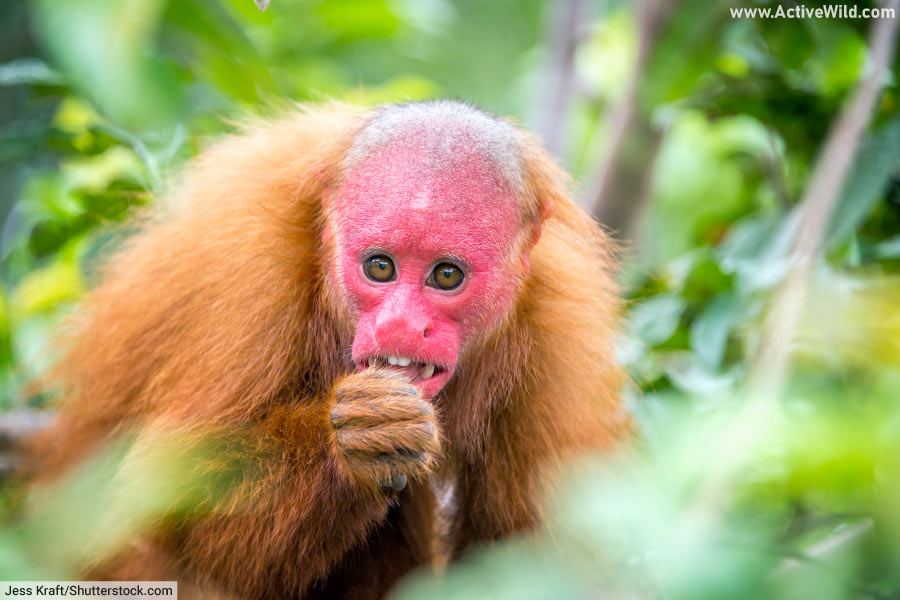
Scientific name: Cacajao calvus
Family: Pitheciidae
Continent: South America (specifically, the Amazon Basin)
IUCN conservation status: Vulnerable
The bald uakari is a small, tailless primate known for its striking, bright red face, which is caused by a lack of skin pigmentation and an extensive network of blood vessels beneath the skin.
The monkey’s red face is an indicator of good health, making it an important feature in mate selection.
The bald uakari’s long, shaggy ranges in color from white to reddish-brown. The species is arboreal, living in groups called troops, and is primarily frugivorous, feeding on seeds, fruits, and insects.
Bald uakaris play an essential role in seed dispersal in their habitats, which include flooded forests and seasonally flooded areas near rivers.
Discover More With Active Wild
The bald uakari was also featured on this page: Ugly Animals List with Pictures & Facts
You can find out more about monkeys on this page: Monkeys – The Ultimate Guide
Discover different types of monkeys on this page: Types of Monkeys
Bat-Eared Fox
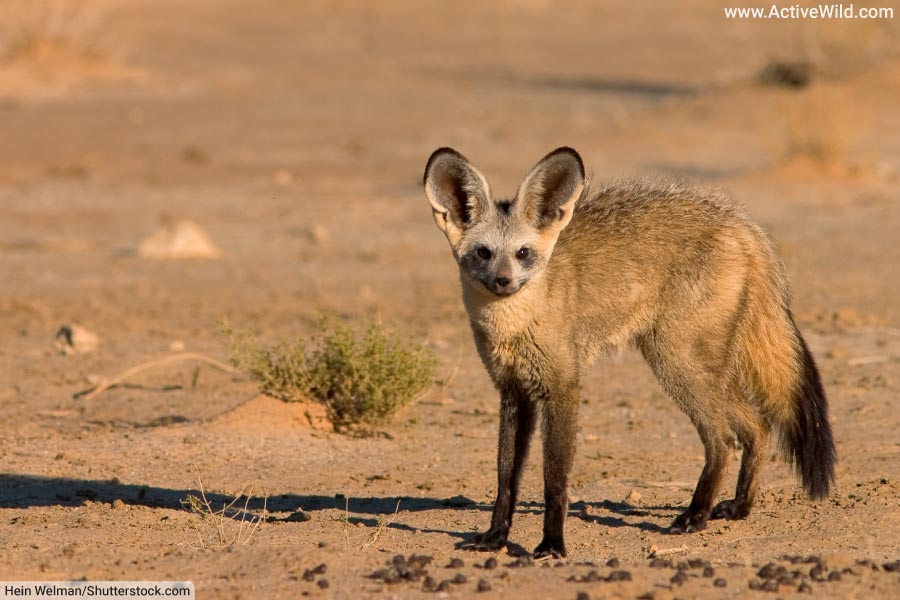
Scientific name: Otocyon megalotis
Family: Canidae
Continent: Africa
IUCN conservation status: Least Concern
A small fox known for its large, bat-like ears, which are used for thermoregulation and locating prey.
This weird mammal was also featured on our main Weird Animals page.
Discover More With Active Wild
You can see EVERY species of dog on this page: Wild Dog Species List with Pictures and Facts
Bearded Pig
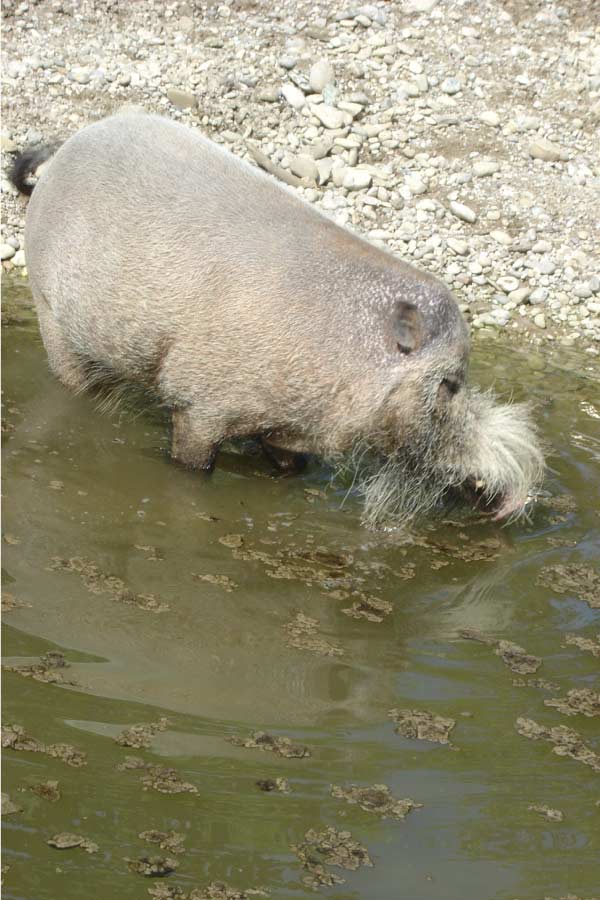
Scientific name: Sus barbatus
Family: Suidae
Continent: Southeast Asia (specifically, Borneo, Sumatra, and the Malay Peninsula)
IUCN conservation status: Vulnerable
The bearded pig is a wild pig species named for its distinctive beard-like facial hair, which consists of elongated whiskers on the sides of its snout and chin.
This unusual-looking Asian species has a long, slender body with grey-brown fur and a small, straight tail. It is a social animal, often forming large groups called sounders, and is known to migrate long distances in search of food.
The bearded pig is omnivorous, its diet consisting of fruits, seeds, roots, and small animals. The species plays a vital role in its ecosystem, as its foraging helps disperse seeds and aerate the soil.
Discover More With Active Wild
You can see more Asian animals on this page: Asian Animals
You can see more omnivorous animals on this page: Omnivores Examples
Capybara
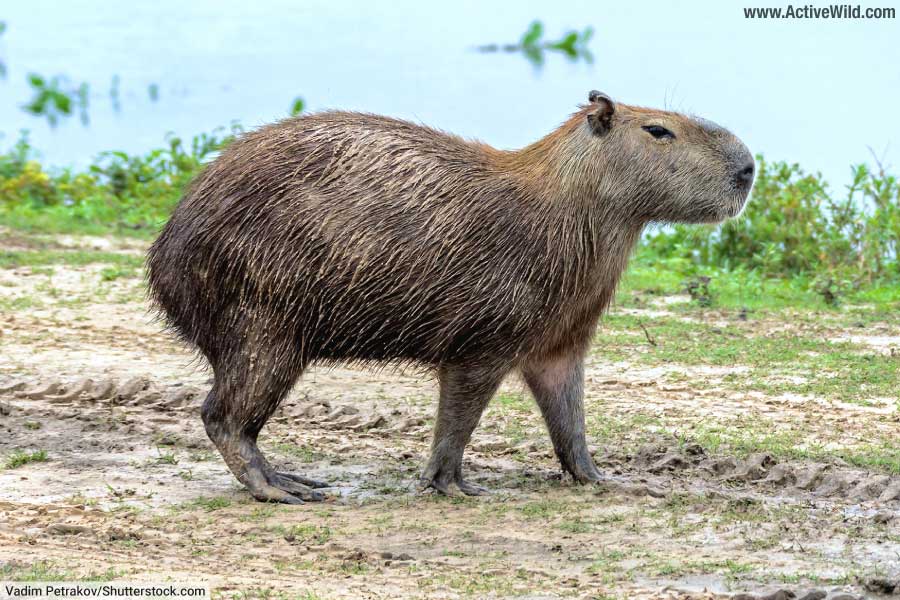
Scientific name: Hydrochoerus hydrochaeris
Family: Caviidae
Continent: South America
IUCN conservation status: Least Concern
The capybara is the world's largest rodent, weighing up to 140 pounds and standing up to 2 feet tall at the shoulder. The South American mammal has a barrel-shaped body covered in coarse, reddish-brown fur, with a small head and partially webbed feet.
The capybara is highly social and lives in groups, often near bodies of water such as rivers, lakes, and swamps. An excellent swimmer, the capybara can hold its breath for up to five minutes underwater.
This weird mammal is an herbivore, mainly grazing on grasses and aquatic plants, and has a unique digestive system that allows it to extract maximum nutrients from its fibrous diet – it is known to bring its food up to chew it again, and sometimes even eats its own droppings!
Discover More With Active Wild
You can find out more about the capybara on this page: Capybara Facts
You can find out more about rodents on this page: Rodents – The Ultimate Guide
You can see more South American animals on this page: South American Animals
Colugo
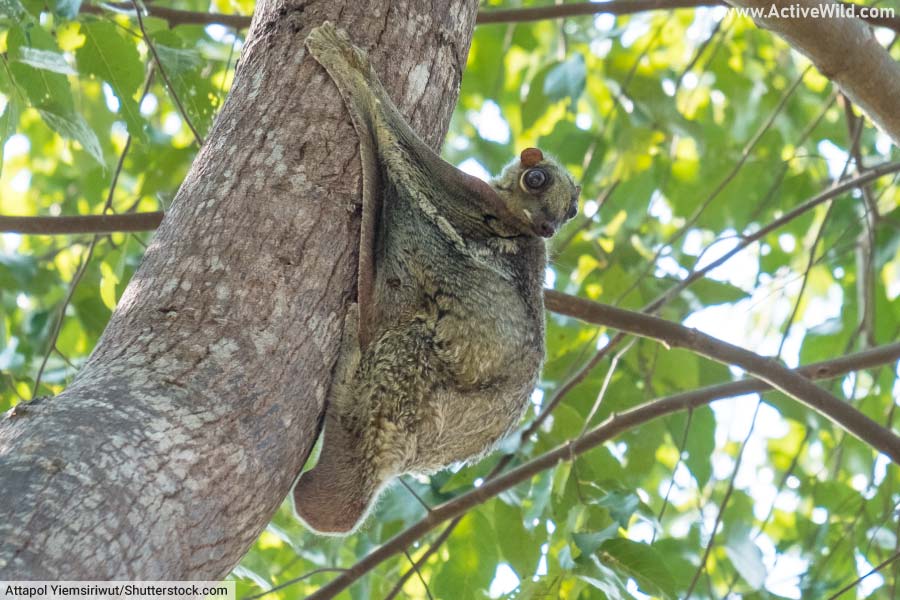
Scientific name: Cynocephalus spp. (There are two species of colugos)
Family: Cynocephalidae
Continent: Southeast Asia
IUCN conservation status: Least Concern (for both species)
A colugo, also known as a flying lemur, is a small, arboreal mammal species that, despite the name, is not actually a true lemur. A colugo has a large membrane of skin – called a patagium – that stretches from its neck to the tips of its fingers, toes, and tail, allowing it to glide between trees with incredible agility.
There are two colugo species:
- Sunda flying lemur Galeopterus variegatus
- Philippine flying lemur Cynocephalus volans
Colugos are nocturnal and feed primarily on leaves, fruits, and flowers, using their sharp teeth to pierce and tear foliage. They have large, forward-facing eyes that provide excellent night vision and strong, sharp claws that help them cling to tree trunks and branches. Colugos play a vital role in their ecosystem by pollinating flowers and dispersing seeds.
Discover More With Active Wild
You can see more Asian animals on this page: Asian Animals
Gerenuk
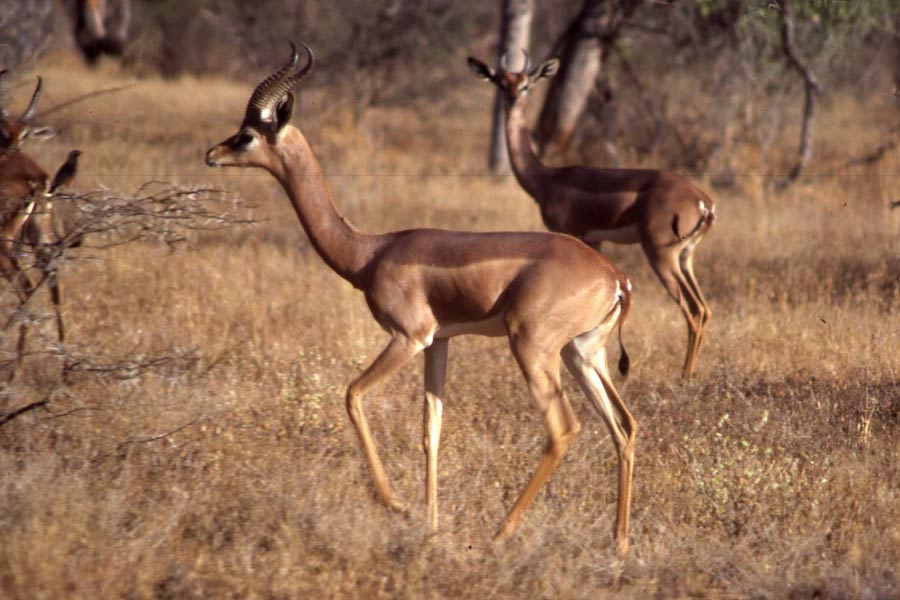
Scientific name: Litocranius walleri
Family: Bovidae
Continent: Africa (specifically, the Horn of Africa and East Africa)
IUCN conservation status: Near Threatened
The gerenuk, also known as the giraffe gazelle, is a bizarre antelope with an elongated neck and legs, allowing it to browse on vegetation that is out of reach for other antelopes.
A gerenuk is able to stand on its hind legs and use its long neck to reach high branches, giving it a unique feeding posture. The animal has a slender body covered in short, reddish-brown fur with a white underbelly and a distinctive dark stripe running down its back.
Gerenuks are herbivores, primarily feeding on leaves, flowers, and fruits, and can go for long periods without drinking water, obtaining necessary moisture from their food.
Discover More With Active Wild
You can see more African animals on this page: African Animals
Hammer-Headed Bat
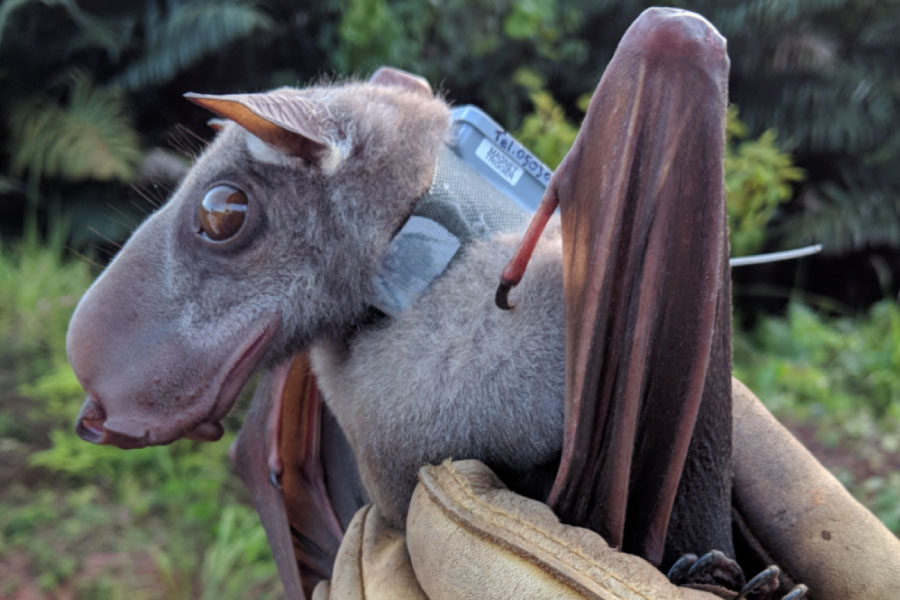
Scientific name: Hypsignathus monstrosus
Family: Pteropodidae
Continent: Africa
IUCN conservation status: Least Concern
A large fruit bat with a unique hammer-shaped head, used for vocalization and amplification of calls during mating.
This weird mammal was also featured on our main Weird Animals page.
Discover More With Active Wild
You can find out more about bats on this page: Bats – The Ultimate Guide
Lowland Streaked Tenrec
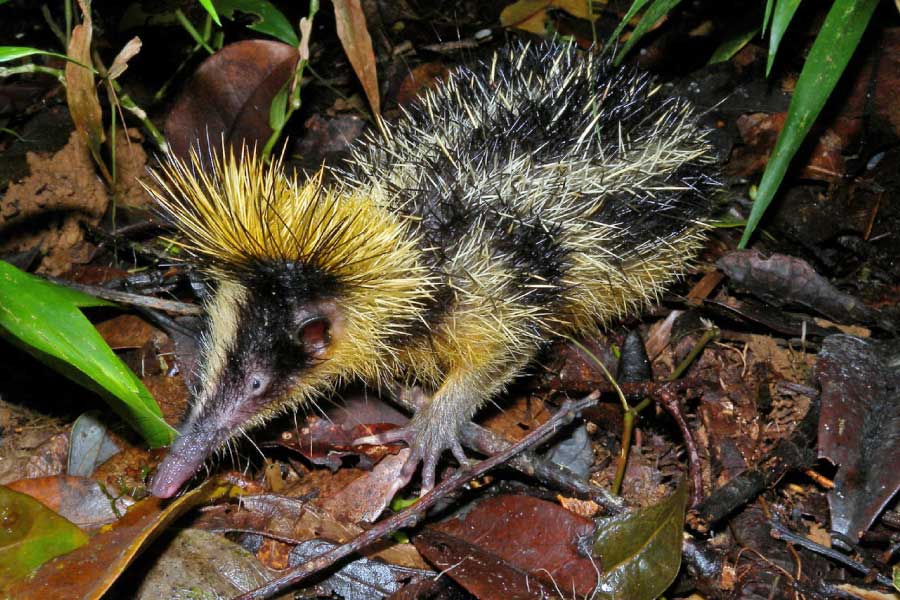
Scientific name: Hemicentetes semispinosus
Family: Tenrecidae
Continent: Madagascar (Africa)
IUCN conservation status: Least Concern
The lowland streaked tenrec is a small, insectivorous mammal with a distinctive appearance, having black and yellow striped fur and specialized spines, called quills, which are used for communication and defense.
This weird mammal can produce a high-pitched sound by rubbing its quills together, a behavior known as stridulation. (You probably won’t be able to hear it, though, as it’s at a very high frequency.)
The species is primarily nocturnal and uses its long snout to forage for insects, especially earthworms.
Discover More With Active Wild
You can see more African animals on this page: African Animals
Maned Wolf
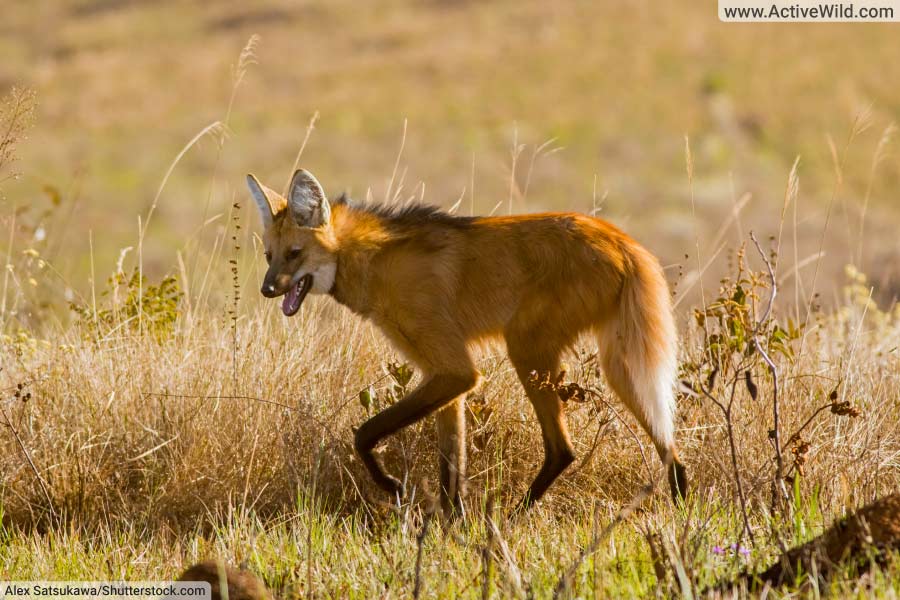
Scientific name: Chrysocyon brachyurus
Family: Canidae
Continent: South America
IUCN conservation status: Near Threatened
A tall, long-legged canid with reddish fur and a distinctive mane, it is the largest canid in South America and is not closely related to any other living canid.
This weird mammal was also featured on our main Weird Animals page.
Discover More With Active Wild
You can see more South American animals on this page: South American Animals
You can see EVERY species of dog on this page: Wild Dog Species List with Pictures and Facts
Mouse Deer (Chevrotain)
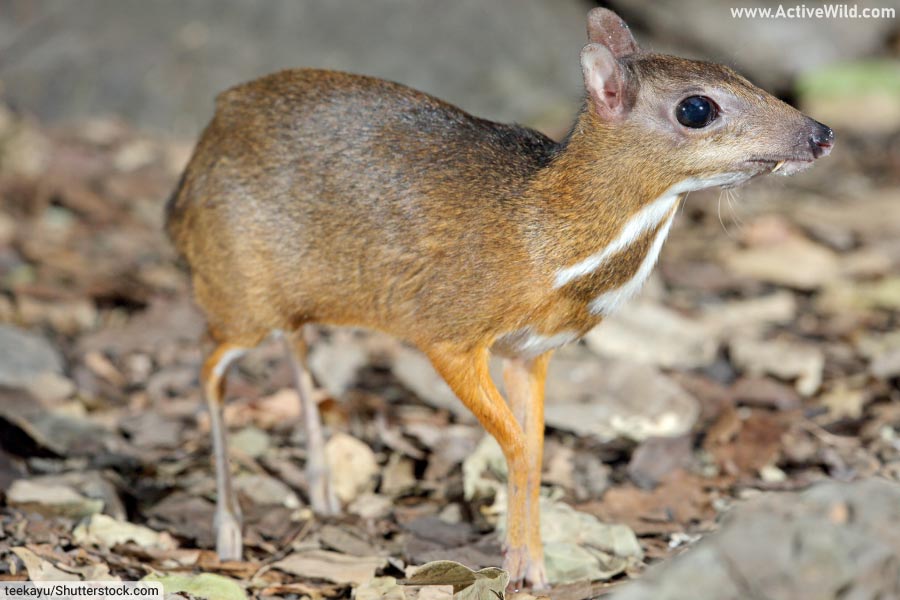
Scientific name: Tragulidae spp. (There are ten species of chevrotains)
Family: Tragulidae
Continent: Asia and Africa
IUCN conservation status: Varies by species
A mouse deer, or chevrotain, is a small, hoofed mammal that resembles a cross between a deer and a mouse. (Despite the name, mouse deer are neither deer nor mice.)
The ten species of chevrotains are the world’s smallest hoofed mammals, with the rabbit-sized Java mouse deer (Tragulus javanicus) being the smallest of all.
Mouse deer have small, compact bodies covered in short fur that ranges from reddish-brown to grey, with white spots or stripes, depending on the species. Their eyes are large and dark, the snout pointed, and the legs long and slender.
Mouse deer are shy and elusive, preferring dense forests and undergrowth near water sources. They are herbivores, feeding on leaves, fruits, and flowers, as well as fungi and other vegetation.
A mouse deer’s small size allows it to navigate the forest floor with ease, helping it avoid predators. These weird mammals play a crucial role in their ecosystems by helping to disperse seeds and maintain plant diversity.
Discover More With Active Wild
You can see more African animals on this page: African Animals
You can see more Asian animals on this page: Asian Animals
Naked Mole Rat
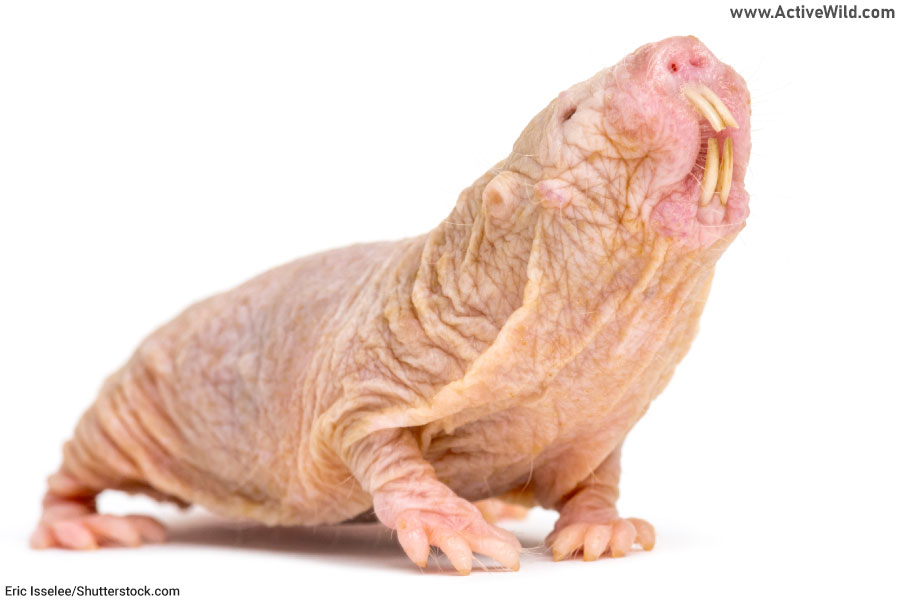
Scientific name: Heterocephalus glaber
Family: Bathyergidae
Continent: Africa
IUCN conservation status: Least Concern
A hairless, eusocial rodent with wrinkled pink skin, known for its long life span and resistance to cancer.
This weird mammal was also featured on our main Weird Animals page.
Discover More With Active Wild
You can see more ugly animals on this page: Ugly Animals List with Pictures & Facts
You can see more African animals on this page: African Animals
Narwhal
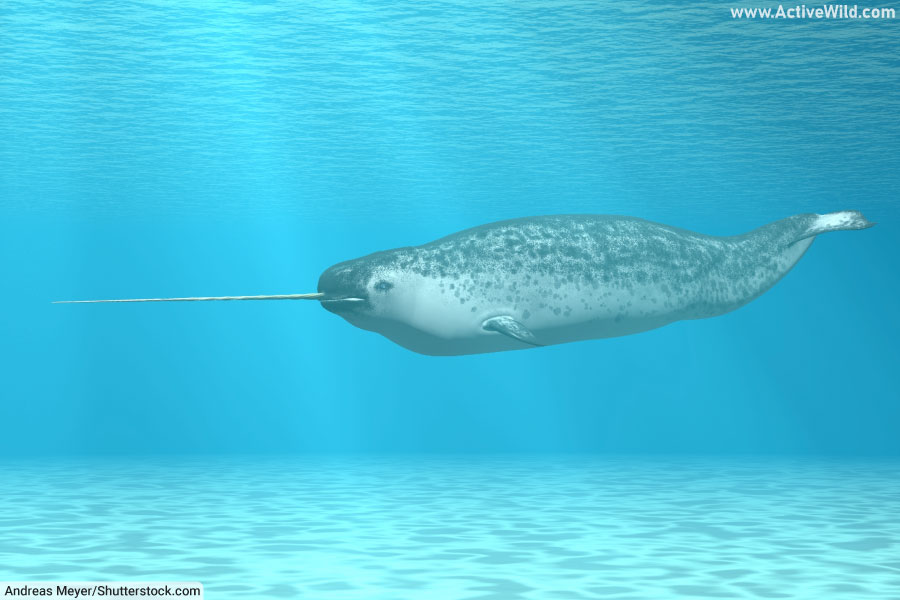
Scientific name: Monodon monoceros
Family: Monodontidae
Continent: Arctic regions (North America and Eurasia)
IUCN conservation status: Near Threatened
A medium-sized toothed whale, known for its long, spiraled tusk, which is actually an elongated canine tooth.
This weird mammal was also featured on our main Weird Animals page.
Discover More With Active Wild
You can find out more about the narwhal on this page: Narwhal Facts
You can see more Arctic animals on this page: Arctic Animals
Pangolin
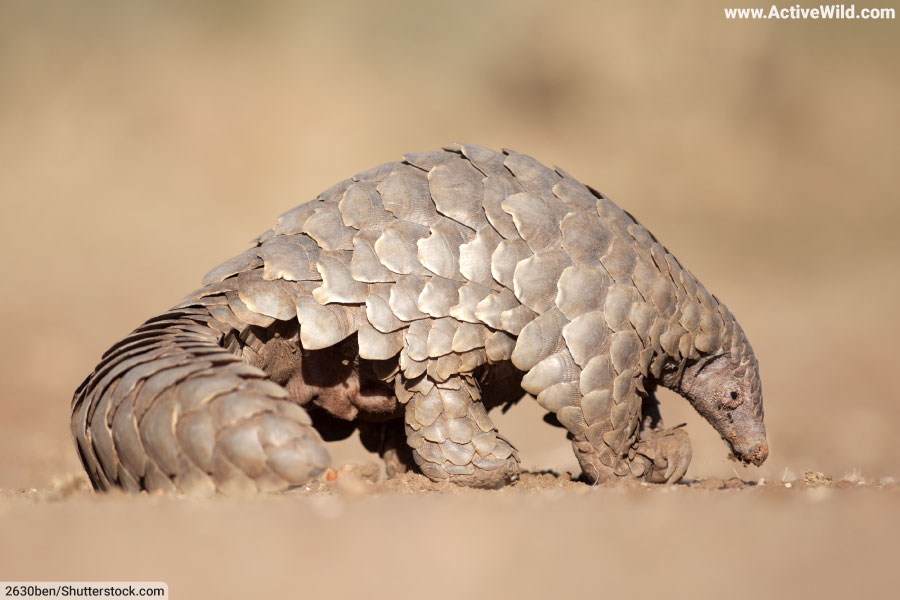
Scientific name: Manis spp. (There are eight species of pangolins)
Family: Manidae
Continent: Africa and Asia
IUCN conservation status: Varies by species
A group of scaly mammals that roll into a ball for protection, they are the most trafficked mammals in the world, primarily for their scales and meat.
This weird mammal was also featured on our main Weird Animals page.
Discover More With Active Wild
You can see more African animals on this page: African Animals
You can see more Asian animals on this page: Asian Animals
Platypus
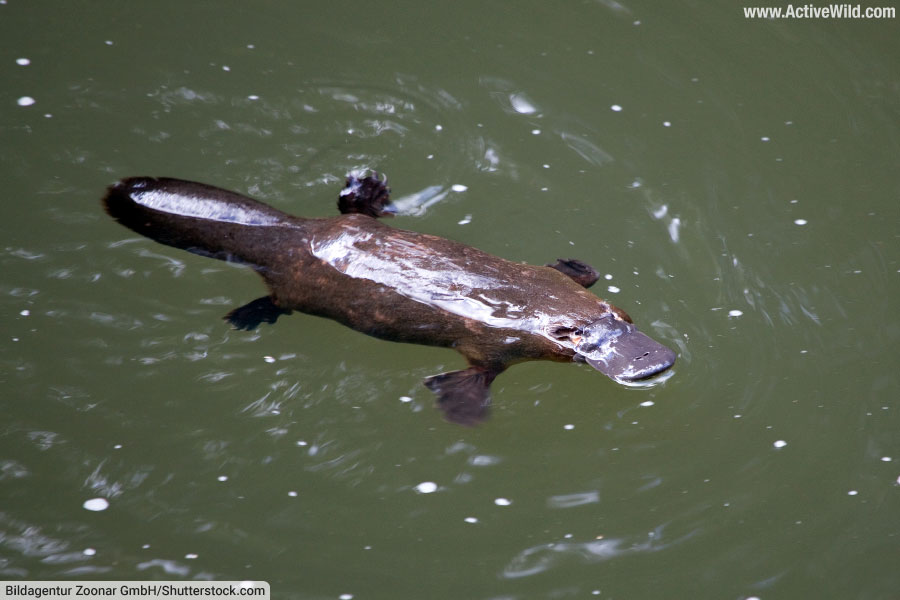
Scientific name: Ornithorhynchus anatinus
Family: Ornithorhynchidae
Continent: Australia
IUCN conservation status: Near Threatened
A unique, egg-laying mammal with a duck-like bill, webbed feet, and venomous spurs, it is one of only five species of monotremes.
This weird mammal was also featured on our main Weird Animals page.
Discover More With Active Wild
You can find out more about this weird animal on this page: Platypus Facts
Discover more Australian birds on this page: Australian Birds
Proboscis Monkey
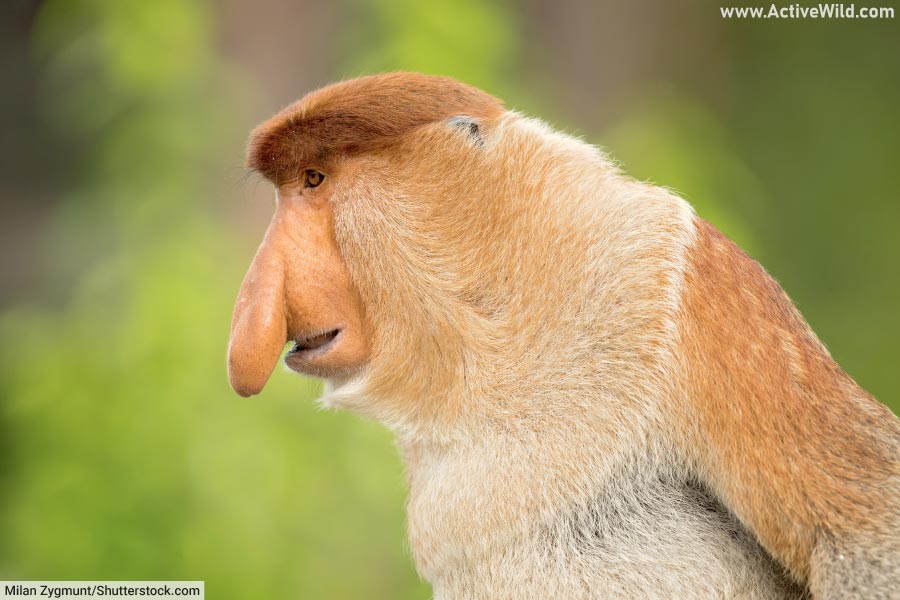
Scientific name: Nasalis larvatus
Family: Cercopithecidae
Continent: Asia (specifically, the island of Borneo)
IUCN conservation status: Endangered
The proboscis monkey is a large, arboreal primate known for the distinctive, elongated nose of the male. The large nose is thought to help amplify vocalizations and is also used as a display for attracting mates.
A proboscis monkey has a pot-bellied appearance due to its large, multi-chambered stomach, which is essential for digesting its primarily leaf-based diet. The species is an excellent swimmer, with partially webbed feet, and is often found in mangrove forests, swamps, and riverine environments.
Proboscis monkeys are social animals that live in groups known as bands. They are herbivores, feeding on leaves, seeds, and fruits.
Discover More With Active Wild
You can find out more about this weird animal on this page: Proboscis Monkey Facts
You can find out more about monkeys on this page: Monkeys – The Ultimate Guide
Discover different types of monkeys on this page: Types of Monkeys
Saiga Antelope
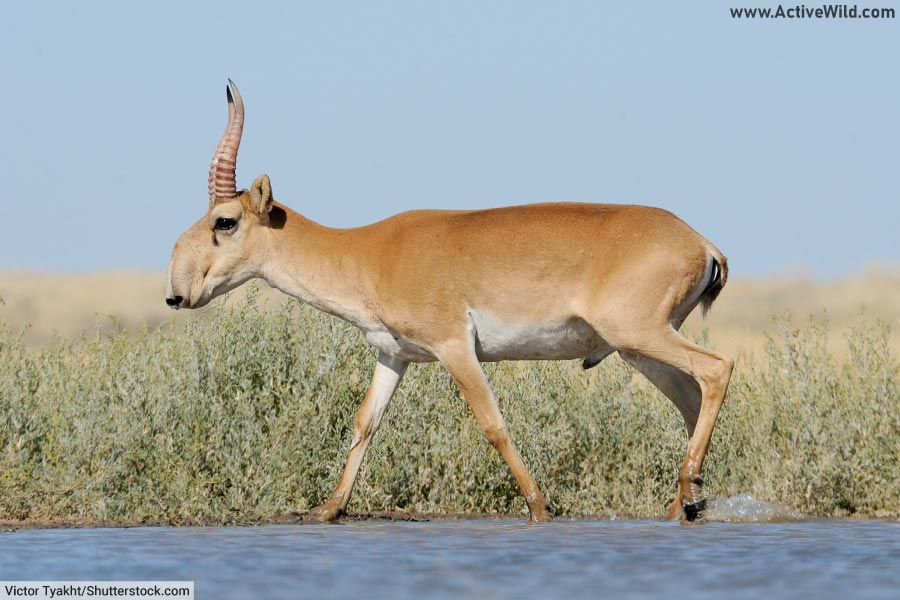
Scientific name: Saiga tatarica
Family: Bovidae
Continent: Asia (specifically, Central Asia)
IUCN conservation status: Critically Endangered
A critically endangered antelope known for its distinctive, bulbous, humped nose which helps filter dust and regulate temperature.
This weird mammal was also featured on our main Weird Animals page.
Discover More With Active Wild
You can see more Asian animals on this page: Asian Animals
Sloth
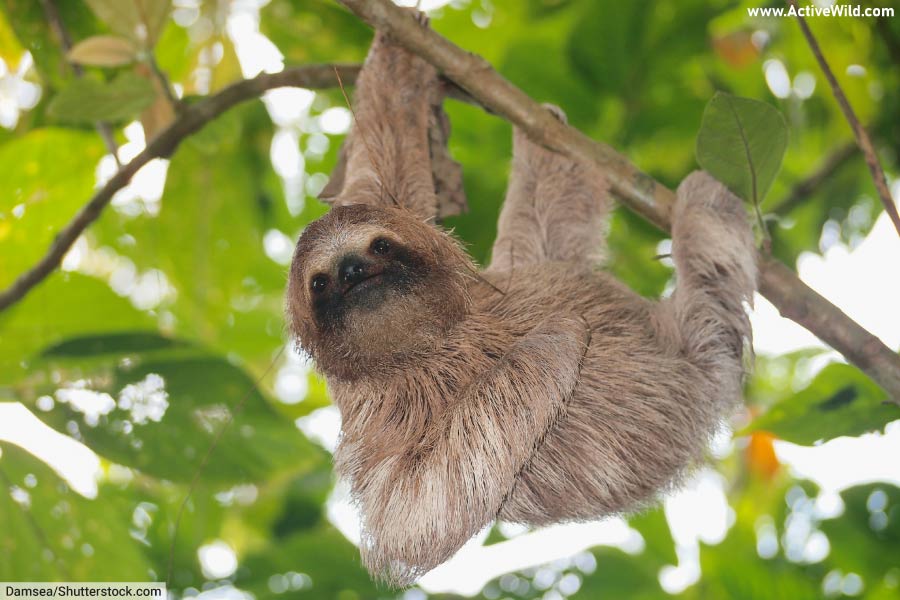
Scientific name: There are two genera with six species (Bradypus spp. and Choloepus spp.)
Family: Bradypodidae and Megalonychidae
Continent: Central and South America
IUCN conservation status: Varies by species
Sloths are slow-moving, arboreal mammals known for their distinctive appearance and slow, deliberate movements. They have long limbs, a short body, and a small head with a flat, rounded face.
Sloths have thick, coarse fur that often appears green due to the presence of algae, which helps with camouflage.
These weird mammals are adapted for life in the trees, with strong, curved claws for gripping branches, and spend most of their time hanging upside down.
Sloths are herbivores, feeding primarily on leaves, buds, and occasionally fruits. Their slow metabolism allows them to survive on a limited diet, and they descend to the ground only about once a week to defecate.
Discover More With Active Wild
You can find out more about sloths on this page: Sloth Facts
You can see more South American animals on this page: South American Animals
Snub-Nosed Monkey
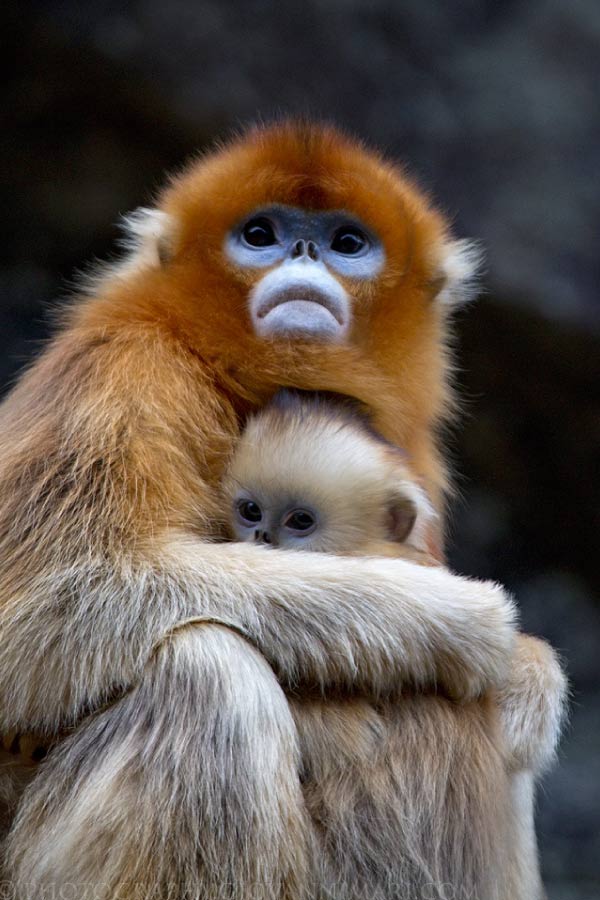
Scientific name: Rhinopithecus spp. (There are five species of snub-nosed monkeys)
Family: Cercopithecidae
Continent: Asia (specifically, the high-altitude forests of China, Vietnam, and Myanmar)
IUCN conservation status: Varies by species
Snub-nosed monkeys are a group of primates characterized by their distinctive, upturned noses and striking facial coloration. They have thick, fur-covered bodies, which help them withstand the cold temperatures of their high-altitude habitats, and a prominent, bushy tail.
Snub-nosed monkeys are social animals that live in large, multi-level groups called troops, with a complex hierarchy and communication system. They are primarily folivorous (leaf-eating), but also consume fruits, seeds, lichens, mosses and occasionally insects.
Snub-nosed monkeys play a crucial role in their ecosystem by dispersing seeds and maintaining plant diversity.
Discover More With Active Wild
You can find out more about monkeys on this page: Monkeys – The Ultimate Guide
Discover different types of monkeys on this page: Types of Monkeys
You can find out more about primates on this page: Primates – Ultimate Guide
Star-Nosed Mole
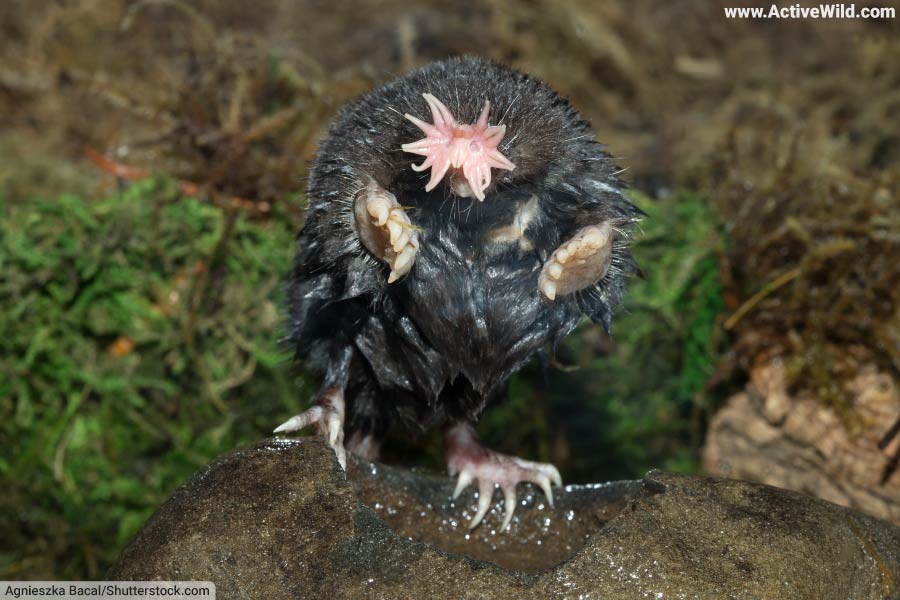
Scientific name: Condylura cristata
Family: Talpidae
Continent: North America
IUCN conservation status: Least Concern
A small mole with a distinctive star-shaped nose, used to detect prey through touch, it is an excellent swimmer and can forage both on land and in water.
This weird mammal was also featured on our main Weird Animals page.
Discover More With Active Wild
You can see more North American animals on this page: North American Animals
Vampire Bat
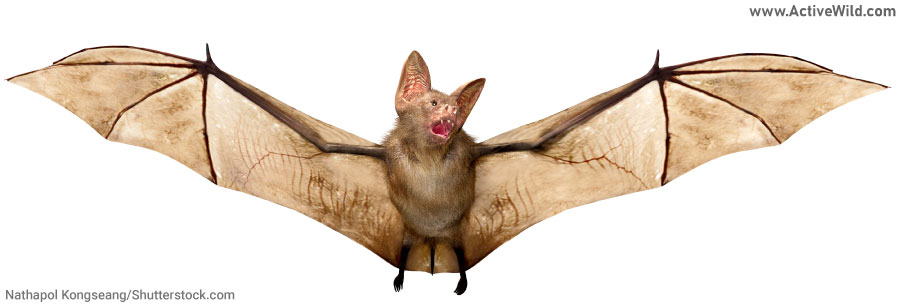
Scientific name: There are three species (Desmodus rotundus, Diaemus youngi, and Diphylla ecaudata)
Family: Phyllostomidae
Continent: Central and South America
IUCN conservation status: Least Concern (all three species)
Among the weirdest of all mammals, vampire bats are three species of small, nocturnal bats that feed exclusively on the blood of other animals, primarily other mammals and birds.
Vampire bats have a unique, specialized set of adaptations that allow them to locate their prey and consume blood efficiently. These include a short, conical muzzle; large, sharp front teeth for puncturing skin; and heat-sensitive receptors on its nose to locate blood vessels. They also produce an anticoagulant in their saliva, which prevents the blood from clotting while it feeds.
Vampire bats are agile fliers and are capable of walking and running on the ground, using their wings to help propel themselves. They are social animals, living in colonies and demonstrating complex cooperative behaviors, such as sharing food with less fortunate members.
Despite their fearsome reputation, vampire bats play a vital role in their ecosystem by helping to control populations of other animals They also provide valuable insights into blood coagulation and anticoagulant therapies for humans.
Discover More With Active Wild
You can find out more about vampire bats on this page: Vampire Bat Facts
Discover More With Active Wild
You can see more weird species on this page: Weird Animals Pictures & Facts
Discover more about the animal kingdom: Animals – The Ultimate Guide
Discover more about mammals: Mammals - The Ultimate Guide


